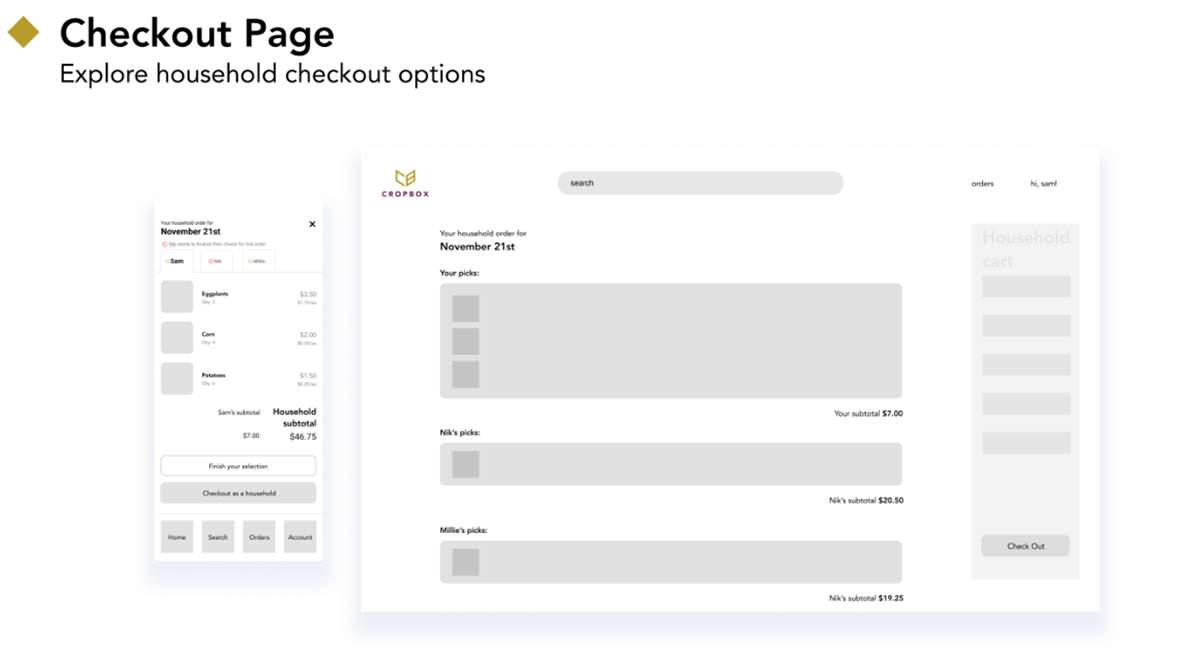as a household to pick their groceries together.
hidden fees like premiums, services, and delivery fees.
The tracking and communication system provides a more flexible delivery time window and tailors the optimal delivery experience for customers, who then can expect to enjoy the produce in their best condition.
Given the responsive web platform, having the “Keep Browsing” section provides a seamless omnichannel experience to the users across devices of different screen sizes.
The "checkout as a household" feature allows individual customers to make their own selections for the shared box asynchronously while being able to see what other people in the house chose for their produce. This would not only help them reduce food waste by avoiding purchasing redundant items but also alleviate any stress of having to congregate in front of a bigger screen to make a collective decision on their order.





incorporate their feedback in this iteration.


